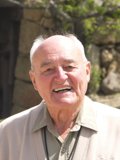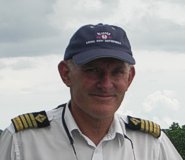

Above: Ed Bearss.
Below: Bob Reynolds.

“What entertainment do you provide?” came a voice from the back.
“Well we’ve just had a shipload of nudists, so I’ve got some new ideas,” she replied.
Thus was the tone set for a trip to the Solomon Islands and beyond, eleven nights on board the 338-foot Clipper Odyssey, whose annual schedule consisted of short cruises for up to 128 passengers from Antarctica to Alaska. With her fleet of ten 10-passenger Zodiac boats and her crew of 70, she followed the sun—in this case making her springtime passage from the southern to the northern hemisphere with passengers sharing a common interest, World War II history.
We were well guided by historian Ed Bearss and followers in the “Bearss Brigade” led by Pete Brown, HistoryAmerica Tours, and Bob Reynolds, Valor Tours. Both led shoreside walks and offered lectures each day, Ed’s regarding the Marine Corps in the Pacific—including his own experience—and Bob’s regarding history plus geography, culture and other matters of general interest. Outstanding were landings:

Above: Clipper Odyssey and former Aussie destroyer skipper Capt. Frank Allica. Below: With cabinmate Warren Gabelman (left), Nicholas communications officer and GQ OOD ’43–’45.

Also outstanding were active volcanos on Bougainville and at Rabaul, where one obliged by releasing steam and ash every 10–20 minutes.
The ship’s staff included speakers on such topics as marine biology and volcanos. They also skippered our Zodiacs and led us on a wonderful afternoon of snorkeling at Plum Pudding Island. There at the junction of Ferguson Passage and Blackett Strait, where contrast with World War II associations reached a peak, a long afternoon of swimming over the coral reef in a spectacular volcanic island setting proved a highlight of the trip.
In their mother tongue, “savo” translates to “kindred” or “bretheren.” As Savo Island is the main landmark on the horizon from every viewpoint around Ironbottom Sound, this—rather than characterizations attached to it from wartime—seemed a more fitting description of the tranquil scene that greeted us, and of the entire Clipper Odyssey voyage.